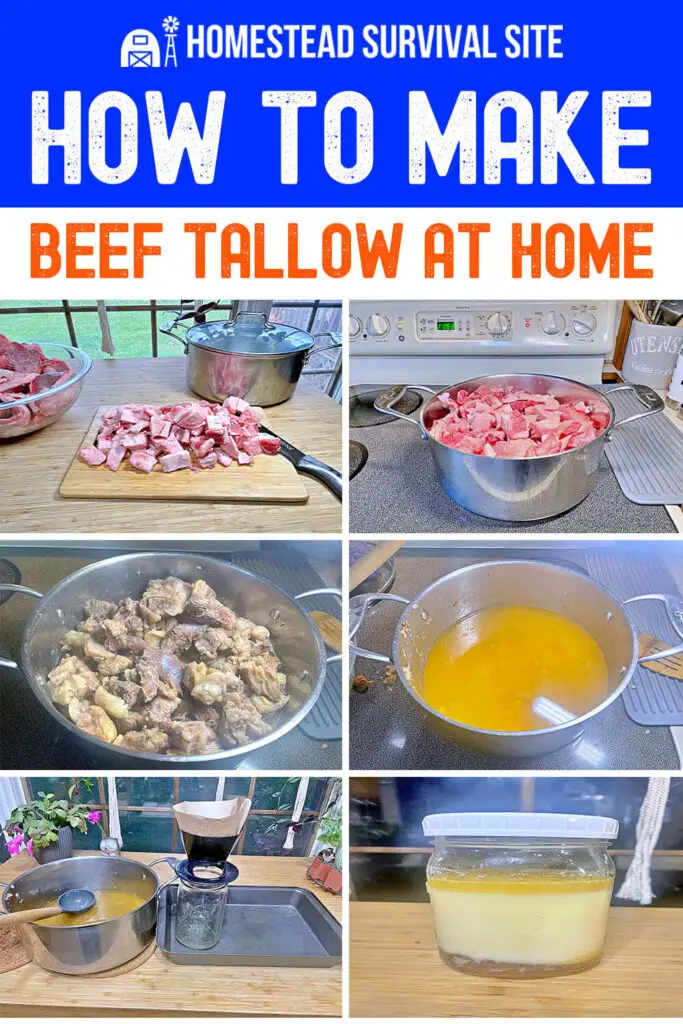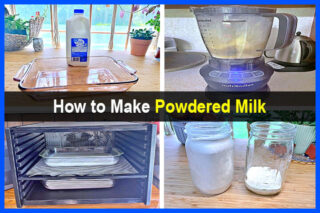Estimated reading time: 7 minutes
“Waste not want not” is a common saying where I live. And many of the locals put this into practice by making beef tallow from the leftover fat after a cow has been butchered. Beef tallow has a number of uses in the kitchen as well as in cosmetics and candles. Beef tallow is easy to make and well worth the time spent.
What Is Beef Tallow?
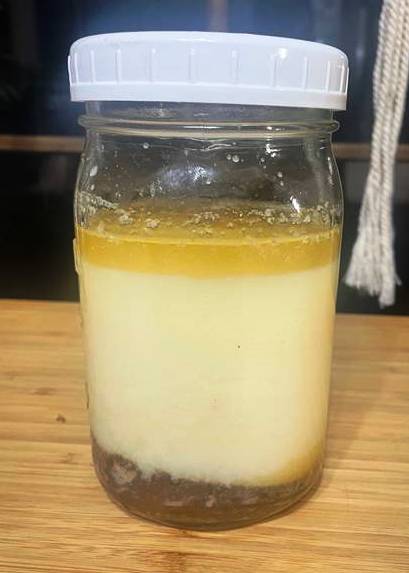
Tallow is rendered beef fat, or suet. Rendering means heating the suet at a low temperature, so that you can strain it to remove any bits of meat or impurities. You can purchase tallow or you can render your own.
Technically, tallow refers to suet, which is fat specifically from around the kidneys and internal organs of cows. However, if you can’t source suet, you can use beef fat from any part of the cow, it will just be slightly different.
Suet when rendered into tallow, is a little firmer at room temperature than the fat that comes from muscle meat. The fat from the internal organs is a little bit richer in minerals and nutrition, but the fat from around the cow’s muscles will work just fine.
Want to save this post for later? Click Here to Pin It On Pinterest!
What Is Tallow Used for?
Tallow is often used for deep frying because it has a smoke point of 420 degrees Fahrenheit. It also adds flavor to dishes and can be used in place of oil or butter. Tallow can also be used for candlemaking, lip balms, and other crafts.
Ingredients:
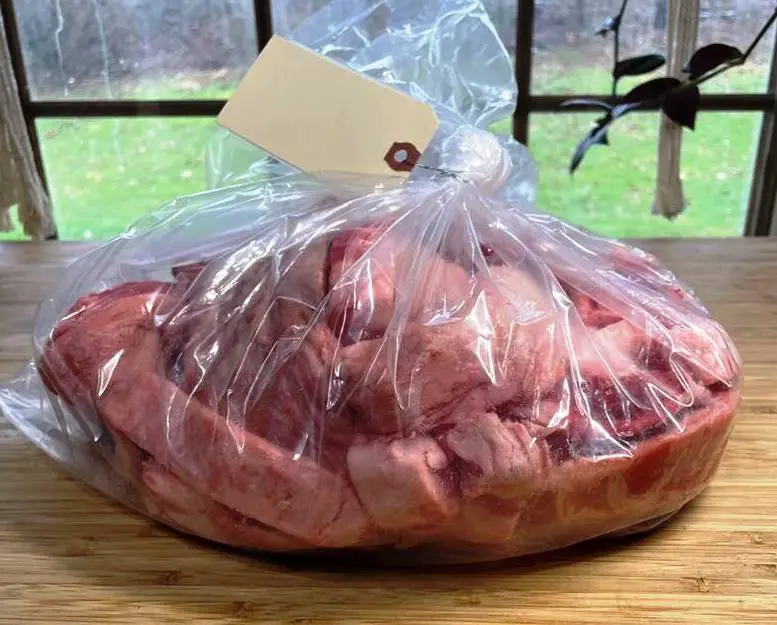
The only thing you need to make tallow is beef fat. Ideally, you’ll want to use fat from around the internal organs. But fat from the muscle of the cow will also work.
I purchased beef fat from my local grocery store. They have their own on-site butcher who was able to give me 6 pounds of beef fat for around $6. The beef fat that I was able to source was from the muscles, not the internal organs. It also had bits of meat and muscle still attached to it.
You might be able to purchase prepackaged suet from your grocery store (as long as its fit for human consumption). You can ask at your local butcher, or collect your own.
If you cook with beef regularly, you can store your fat trimmings in the freezer until you have enough saved up to render.
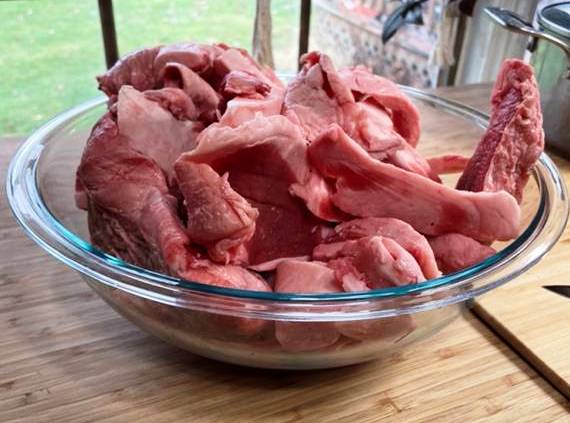
Directions
- If your beef fat is frozen, you’ll want to let it defrost completely before starting.
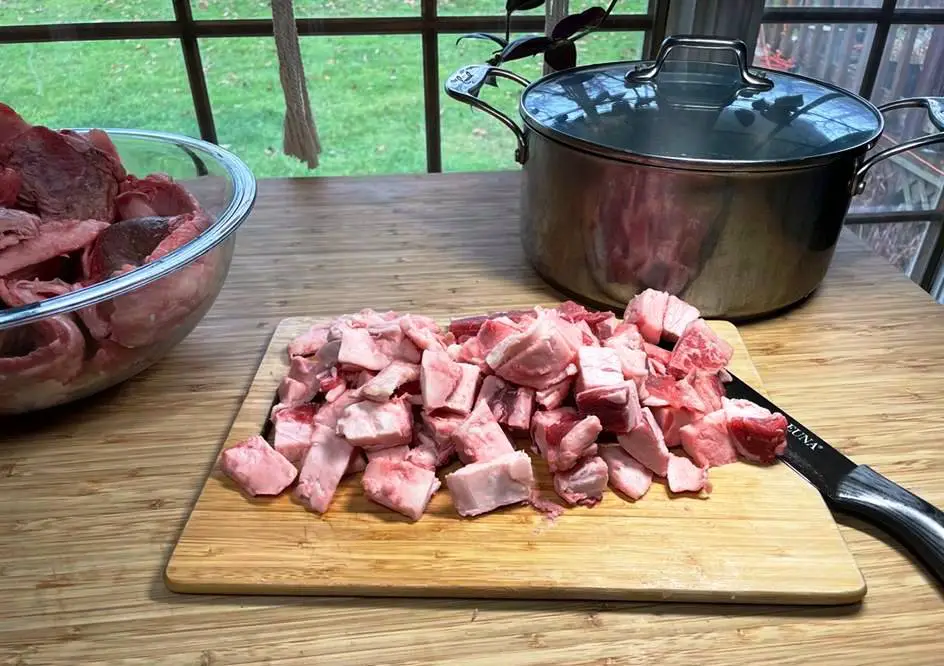
- Cut the beef fat into roughly one inch chunks and put it in a large stock pot. You can see that my beef fat has a lot of meat still on it because it came from the muscle portions of the cow rather than around the internal organs.
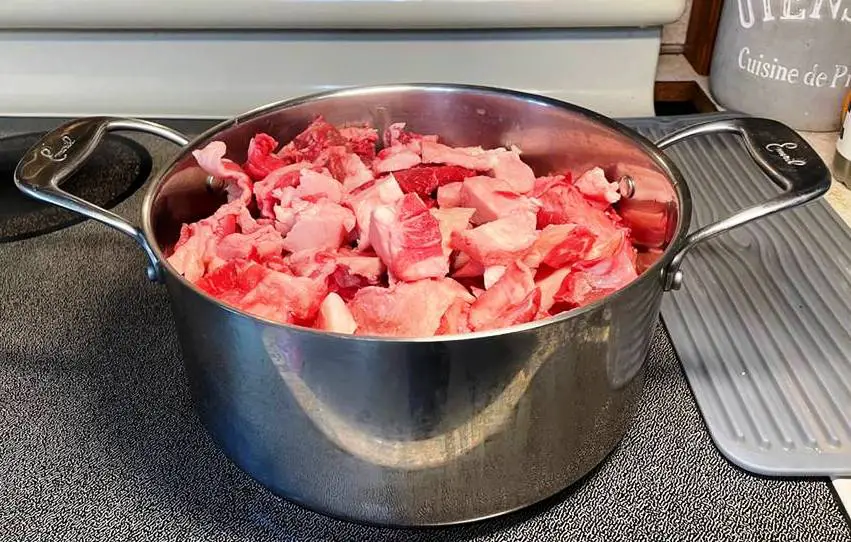
- Put the pot on the stovetop and cover it. Turn it on low.
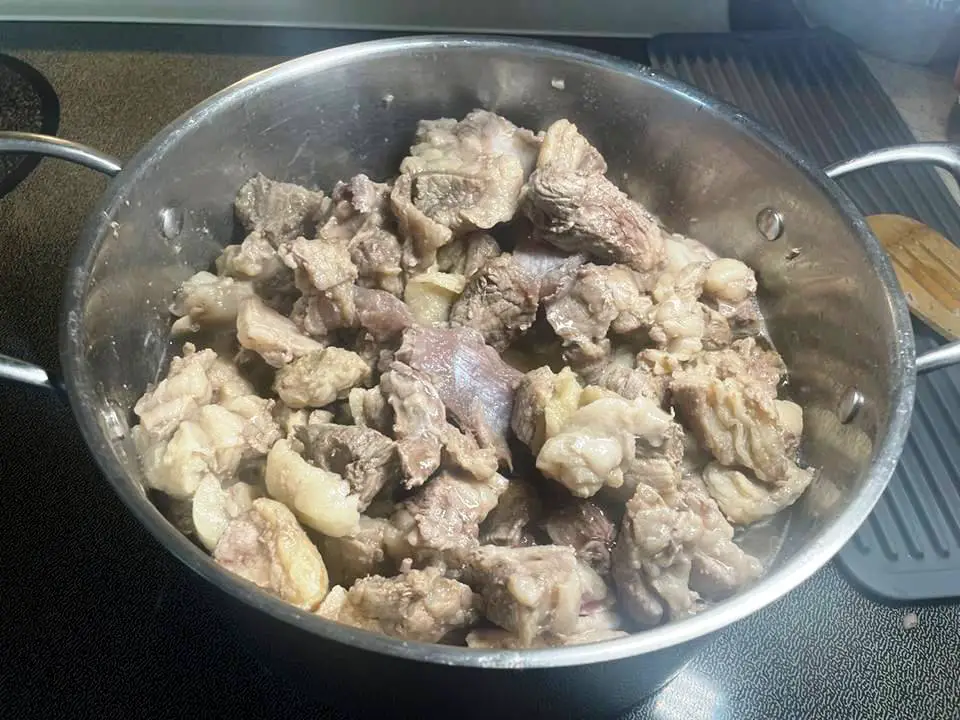
- Let your beef fat heat for several hours. If it starts to bubble, you’ll need to turn the heat down so you don’t burn it. It took about 4 hours for my beef to render. Stir your pot periodically so that it doesn’t stick to the bottom or burn, which would give it an off flavor.
- You’ll know the tallow is ready when most of the fat has melted through.

- Scoop out any large chunks.
- Your tallow should be a rich golden color and smell delicious!
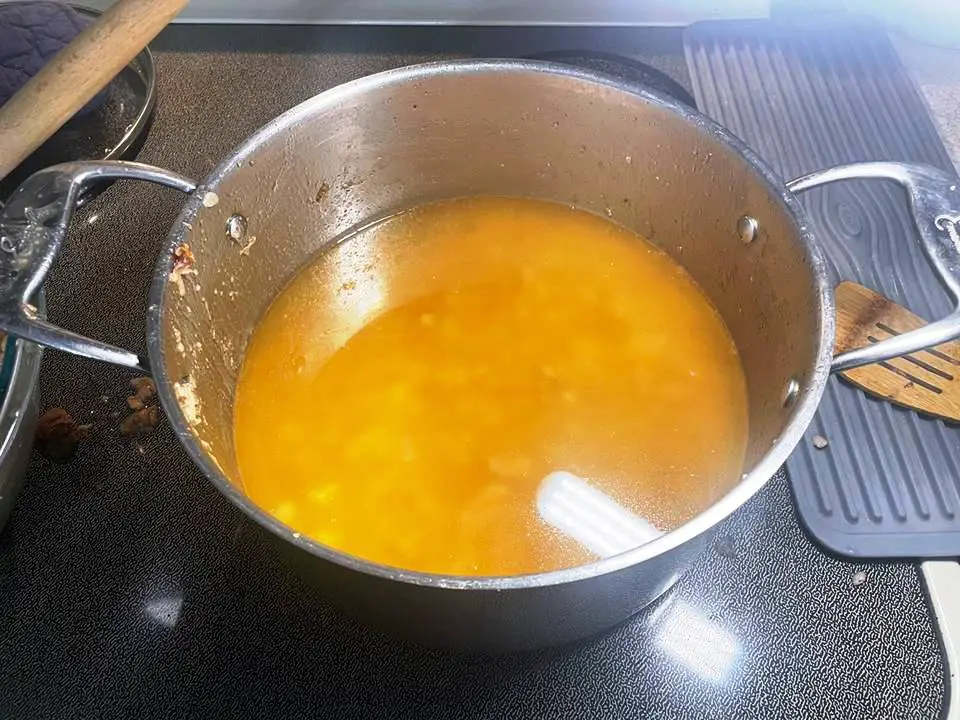
- Strain your melted beef fat through a mesh strainer or even a coffee filter. Using a coffee filter takes a little bit longer and you may want to keep your pot on the stove so the tallow stays warm and melted. I went through several coffee filters for this much tallow.
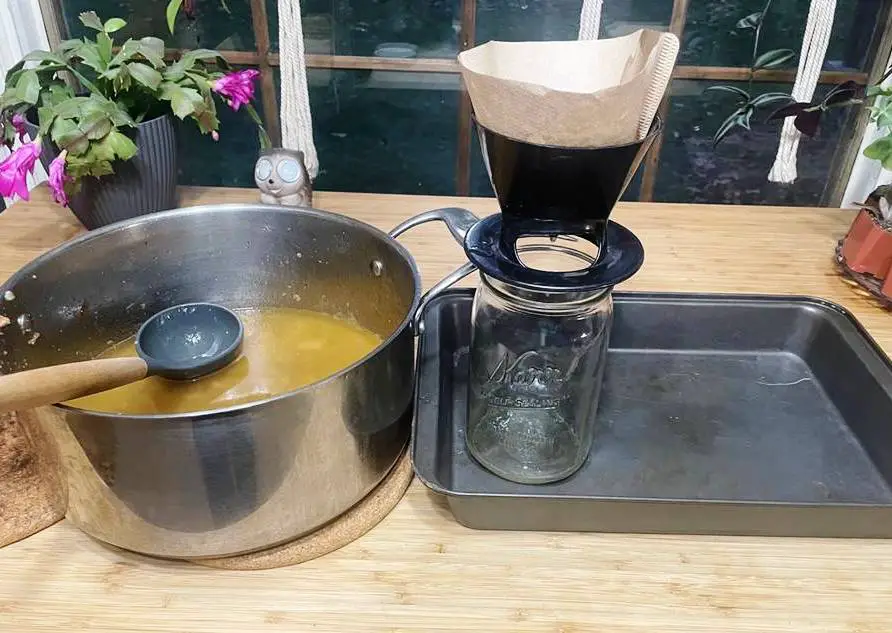
- Store your tallow in a mason jar. You can keep it in your fridge for up to a year or even longer if you store it in the fridge or freezer.
Beef tallow is a shelf stable, nutrient dense food. It typically does not get rancid but may oxidize over time. Tallow rendered from suet will be harder at room temperature, which makes it more suitable for crafting into candles and cosmetics. Tallow rendered from muscle fat will be a little softer at room temperature, like butter.
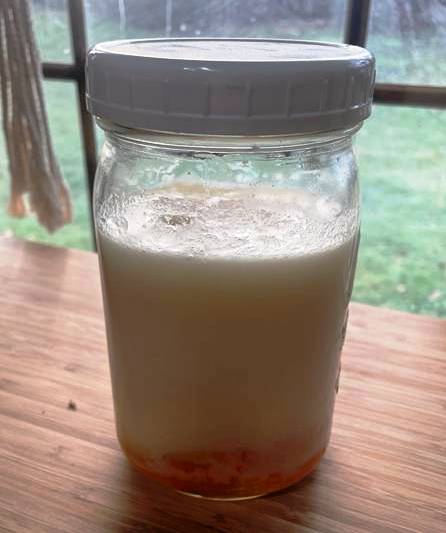
The amount of tallow you get from your beef fat depends on a few factors. First, it depends on how pure your fat is. My beef fat had a lot of meat pieces still attached to it, so I had a lot less actual fat to work with. Also, if you don’t cover your at tightly as it heats, you’ll lose some moisture content to evaporation.
Alternative Methods
You can render your beef fat in the oven. Place it in a dutch oven in your oven at 225 degrees Fahrenheit. Stir it and check on it occasionally. It will take at least 5 or 6 hours using this method. You could also put your beef fat in the crock pot and allow it to heat. It will take at least 5 or 6 hours in the crockpot, as well.
Like this post? Don't Forget to Pin It On Pinterest!

Beef Tallow
Equipment
- 1 Large pot
- 1 Large Canning Jar
- 6 to 12 Coffee filters in funnel
Ingredients
- The only thing you need to make tallow is beef fat. Ideally, you’ll want to use fat from around the internal organs. But fat from the muscle of the cow will also work.
Instructions
- If your beef fat is frozen, you’ll want to let it defrost completely before starting.
- Cut the beef fat into roughly one inch chunks and put it in a large stock pot. You can see that my beef fat has a lot of meat still on it because it came from the muscle portions of the cow rather than around the internal organs.
- Put the pot on the stovetop and cover it. Turn it on low.
- Let your beef fat heat for several hours. If it starts to bubble, you’ll need to turn the heat down so you don’t burn it. It took about 4 hours for my beef to render. Stir your pot periodically so that it doesn’t stick to the bottom or burn, which would give it an off flavor.
- You’ll know the tallow is ready when most of the fat has melted through
- Scoop out any large chunks. Your tallow should be a rich golden color and smell delicious!
- Strain your melted beef fat through a mesh strainer or even a coffee filter. Using a coffee filter takes a little bit longer and you may want to keep your pot on the stove so the tallow stays warm and melted. I went through several coffee filters for this much tallow.
- Store your tallow in a mason jar. You can keep it in your fridge for up to a year or even longer if you store it in the fridge or freezer.
Alternative Method
- You can render your beef fat in the oven. Place it in a dutch oven in your oven at 225 degrees Fahrenheit. Stir it and check on it occasionally. It will take at least 5 or 6 hours using this method. You could also put your beef fat in the crock pot and allow it to heat. It will take at least 5 or 6 hours in the crockpot, as well.
Storage and Shelf-Life
- Beef tallow is a shelf stable, nutrient dense food. It typically does not get rancid but may oxidize over time. Tallow rendered from suet will be harder at room temperature, which makes it more suitable for crafting into candles and cosmetics. Tallow rendered from muscle fat will be a little softer at room temperature, like butter.
You May Also Like:



